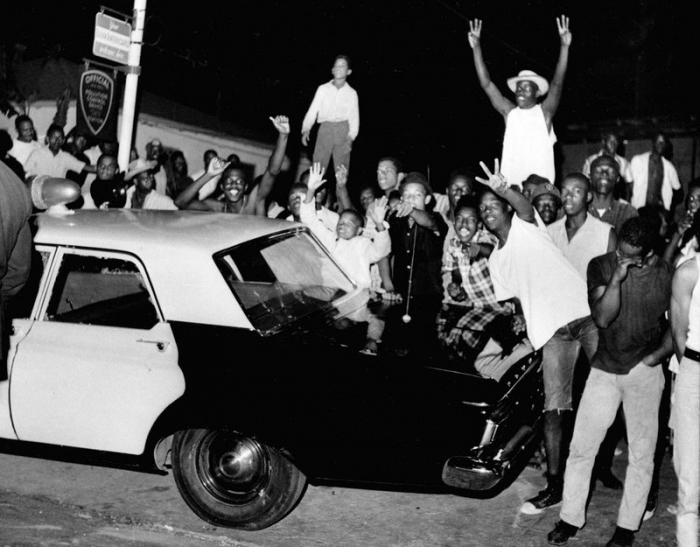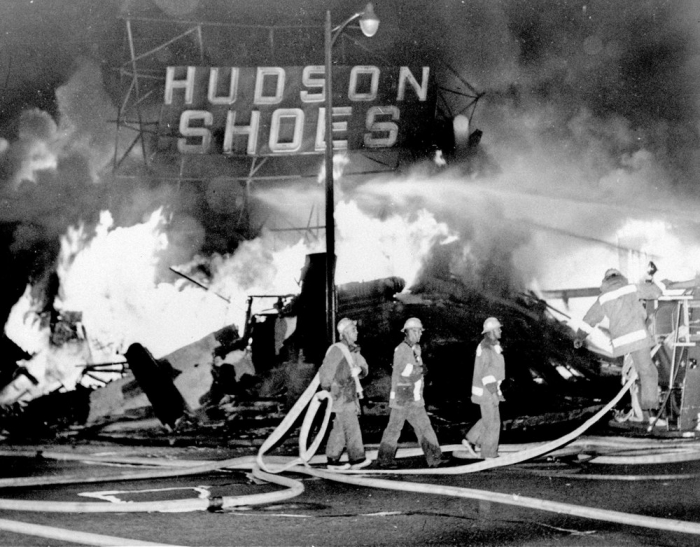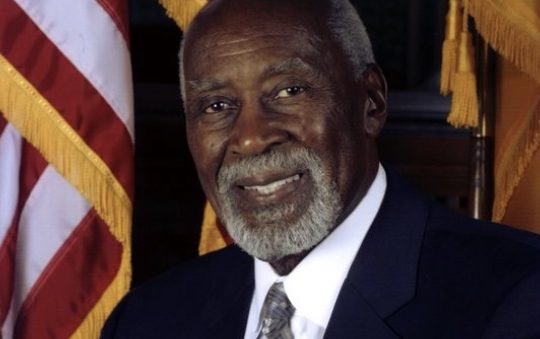A Historical reflection of the “Watts Rebellion” and its impact on today’s social change

In honor of the anniversary of the 5–6-day uprising entitled, the “Watts Rebellion,” one must revisit the energy that surrounded that time. It was a breaking point. A new vernacular was being introduced to the status quo. As the minds of the collective community began to expand, a new reality took shape with spiraling raw energy. The message was clear and channeled through entities that were beyond control. This moment challenged the unspoken contract of every local abiding citizen and brought a new culture in order.
On August 11, the essence of the uprisings that took place in 1965 is still felt today; National Public Radio (NPR) shared articles describing a not-so-distant past influencing current times. One can still physically see the effects of a boiling point, that overspilled into the streets of Watts and South Los Angeles.
The moment labeled the “Watts Rebellion” is marching to a familiar tune of racial injustice. Recounting information reported by History.com, the tip of the iceberg, which had a titanic effect on the local community of Watts and surrounding neighborhoods, generated after two police officers stopped a Black motorist by the name of Marquette Frye. They were under the impression that the motorist was intoxicated. A crowd gathered on Avalon Boulevard and 116th Street, with the air of a fatal outcome surrounding the arrest.
The city was socially fatigued from the lack of political support, which ignited the coals that held a somber flame of hopelessness within the hearts of the collective community. The night grew warm from the buzz of residents taking the reins for change into their own hands. Faces glowed from the ambers of flames, roaring from torched buildings. People were taking anything that could be carried home, savoring the moment’s raw energy circulating through the Watts, fulfilling a need that has always been there.
Many people took to the streets within a 50-mile radius of South-Central Los Angeles; a police act within an unfortunate tie to racial profiling led to “five days of violence,” with over 34 dead, 1,032 injured, and nearly 4,000 arrested according to History.com. Over the 5–6-day period, over 14,000 national guards were assigned to that area.

This was a distinct moment in time because of the range and spread of the social upheaval. A well-known confrontation between police and people of color took many different forms; however, the clearest silhouette is seen at the base of the smoldering ash, which was all that was left from buildings that once stood and supported the community’s infrastructure. According to many reports, there was an estimate of $40 million in property damage.
Interpreted as the “war on poverty,” during that time, the city was seeing hands reached out with no one on the other side to uplift them and no city investment within these areas of focus, leading to the combustion of civil unrest and social change.
Because there were no resources before the eruption, recovery came in centimeter measurements. Much like the effects of the present COVID-19 trauma in underserved populations, pre-existing conditions became open wounds, bleeding out from the community faster than they can be bandaged.
In today’s context, this historical moment is labeled as the “costliest urban rebellion of the Civil Rights era,” seen in the Civil Rights Digital Library (crdl.usg.edu). It would be easy to say, “this is a thing of the past,” however, a similar event occurred half a century later in 2020. The name George Floyd rings in the ears of many and resonates with the fight against police brutality that is still been seen today.
Much like the George Floyd movement, the Watts uprising in 1965 pushed the needle forward. The fires worked metaphorically as a smoke signal for the Southern Christian Leadership Conference (SCLC) under the watchful eye of activist, Martin Luther King, Jr., bringing more attention to the environmental impact on the overall quality of life.
Today’s public servants weighed in on the massive impact of such a historical event. Timothy Watkins, President & CEO Watts Labor Community Action Committee stated, “Never before have so few been neglected by so many as the People of Watts in the City of Los Angeles.”
Councilmember Mark Ridley-Thomas weighed in on the moment and its aftermath. In reflection of the passing of 50-years to Watt’s uprising, Ridley-Thomas stated, “Despite all the social and economic progress since the events in Watts, and after the civil unrest that followed the Rodney King beating trial verdicts, it seems the more things change, the more they remain the same.”
He continued, “To some, Ezell Ford, Eric Garner, Tamir Rice, and Michael Brown are all poignant reminders that something still just isn’t right. And yet, sitting on our hands during an election cycle can’t be the answer either. The battle for justice requires that we be vigilant in maintaining possession of all the tools at our disposal and that we be strategic in their use. In the struggle for political power and influence, abstention is retreat. Apathy is surrender. Indifference is betrayal.”
Assemblymember Mike Gipson reflected on the 56 years of growth from 1965 and stated, “On this anniversary, we reflect on things that have changed and how far we have yet to go. Martin Luther King, Jr. Hospital, Charles R. Drew University of Medicine and Science and California State University Dominguez Hills are just a few of the early changes, but more is needed.”

Gibson continued, “My current legislation, AB 1425 seeks to bring internet/broadband to housing developments and low-income residents so that students and households can have access to studies and resources,” said Assemblymember Mike A. Gipson. “I stand on the shoulders of Mervyn Dymally, Lillian Mobley, Ted Watkins, Edna Allewine, Tommy Jacquette, Ozie Gonzaque, Sweet Alice Harris, Larry Aubrey, Harold Hambrick, Pastor Reginald Pope and the many others who gave their all for Watts. I also stand with the Hawkins family whose business “Hawkins Burgers” is an 80 year institution, pre-dating the Watts Revolt. This is an opportunity to renew our purpose, especially during these challenging times.”
Close attention needs to be paid to the repetition of history; it defines the moments where humanity has yet to see a solution. As one revisits the past and reflects on the day South Los Angeles felt the burn of their despair, the work becomes clear for the present.







